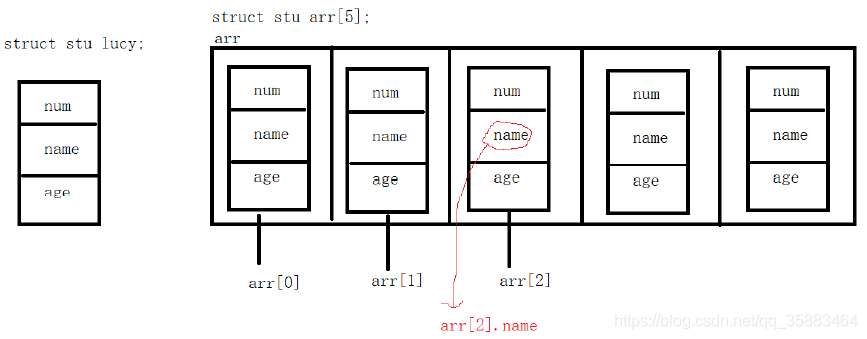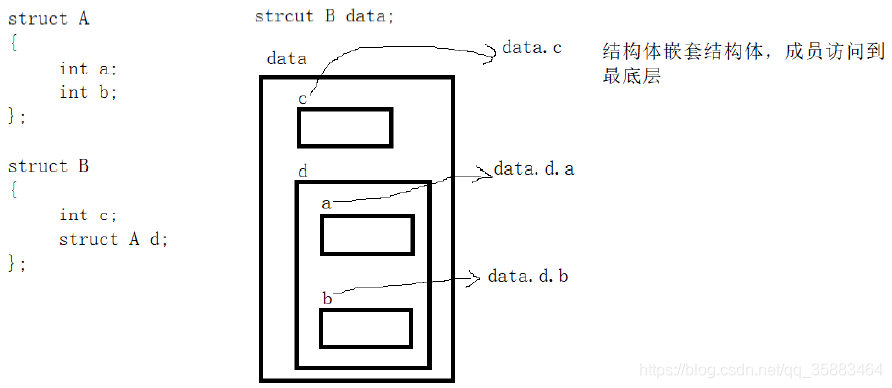文章目录
- 一、结构体的定义和使用
- 1. 使用typedef的情况
- 2.不使用typedef的情况
- 二、结构体数组
- 三、结构体嵌套结构体
一、结构体的定义和使用
-
结构体是存储不同类型的数据项
-
结构体是一种构造数据类型
-
结构体中的成员空间是独立的
为了访问结构的成员,我们使用成员访问运算符(.)。
结构体的定义形式:
1. 使用typedef的情况
- 格式一:此方法最为标准实用
typedef struct student
{
char name[10]; //姓名
int num; //学号
float score; //成绩
}stu;
stu m_stu; //使用方法
- 格式二:省略struct后面的内容
typedef struct
{
char name[10]; //姓名
int num; //学号
float score; //成绩
}stu;
stu m_stu; //使用方法
- 格式三:省略最后分号前的定义
typedef struct student
{
char name[10]; //姓名
int num; //学号
float score; //成绩
};
struct student stu;//使用方式
注意:此格式编译器可能会警告,但是能够运行且可以正常读取数据不会发生段错误
2.不使用typedef的情况
typedef可以自定义名称,不使用相当于直接操作原生的结构体。
- 格式一:将
typedef去掉,此时stu没有意义,注意使用方式
struct student
{
char name[10]; //姓名
int num; //学号
float score; //成绩
}stu;
struct student stu; //使用方法
- 格式二:将
typedef去掉,这是直接创建结构体变量的形式,只能使用一次,几乎没有什么用处
struct
{
char name[10]; //姓名
int num; //学号
float score; //成绩
}stu;
- 格式三:将
typedef去掉,此种方式是比较标准的
struct student
{
char name[10]; //姓名
int num; //学号
float score; //成绩
};
二、结构体数组
每一个数组中存放着结构体,请看下图:

struct stu
{
int num;
char name[16];
int age;
};
void test()
{
struct stu arr[5] = { {10,"lucy",18},{11,"bob",20},{12,"tom",20} };
int n = sizeof(arr) / sizeof(arr[0]);
for (size_t i = 0; i < n; i++)
{
printf("%d %s %dn", arr[i].num, arr[i].name, arr[i].age);
}
}
三、结构体嵌套结构体

struct student
{
int num;
};
struct student_1
{
struct student stu;
char name[16];
int age;
};
void fun_struct(void)
{
struct student_1 data={{10},"xioaming",20};
printf("num=%d,name=%s,age=%d",data.stu.num,data.name,data.age);
}
最后
以上就是悲凉吐司最近收集整理的关于结构体、结构体数组和结构体嵌套结构体的使用的全部内容,更多相关结构体、结构体数组和结构体嵌套结构体内容请搜索靠谱客的其他文章。
本图文内容来源于网友提供,作为学习参考使用,或来自网络收集整理,版权属于原作者所有。








发表评论 取消回复